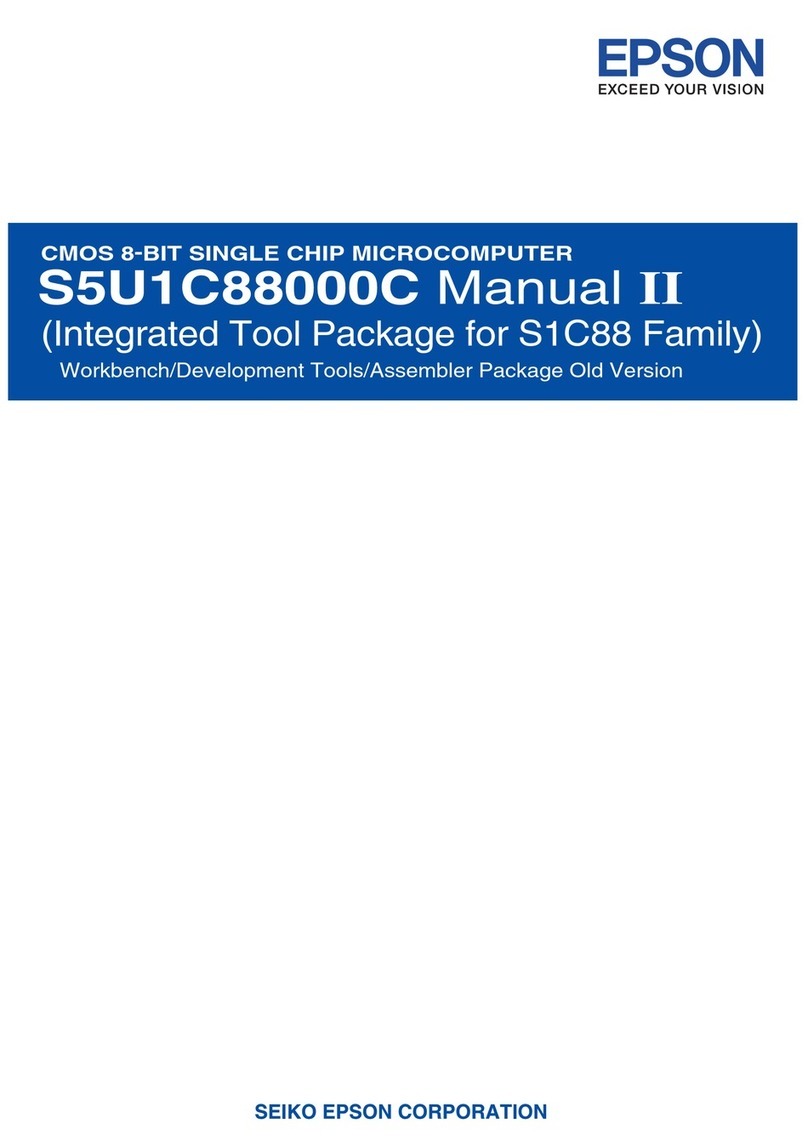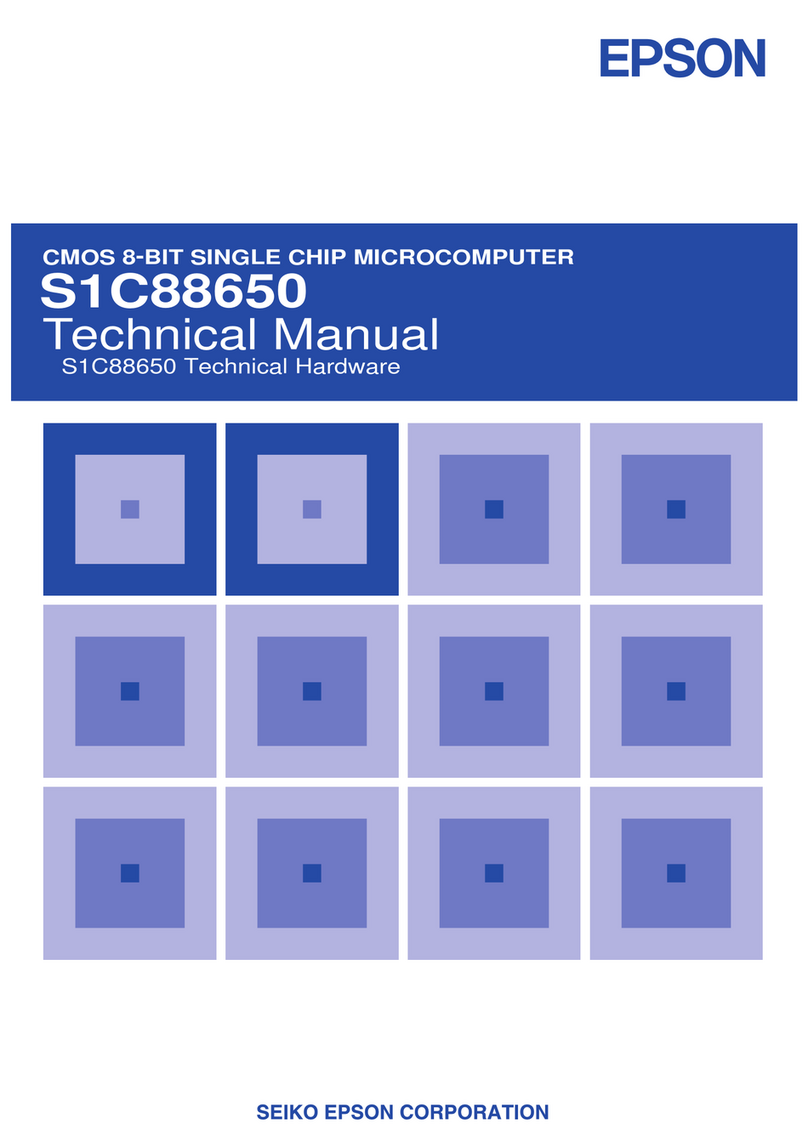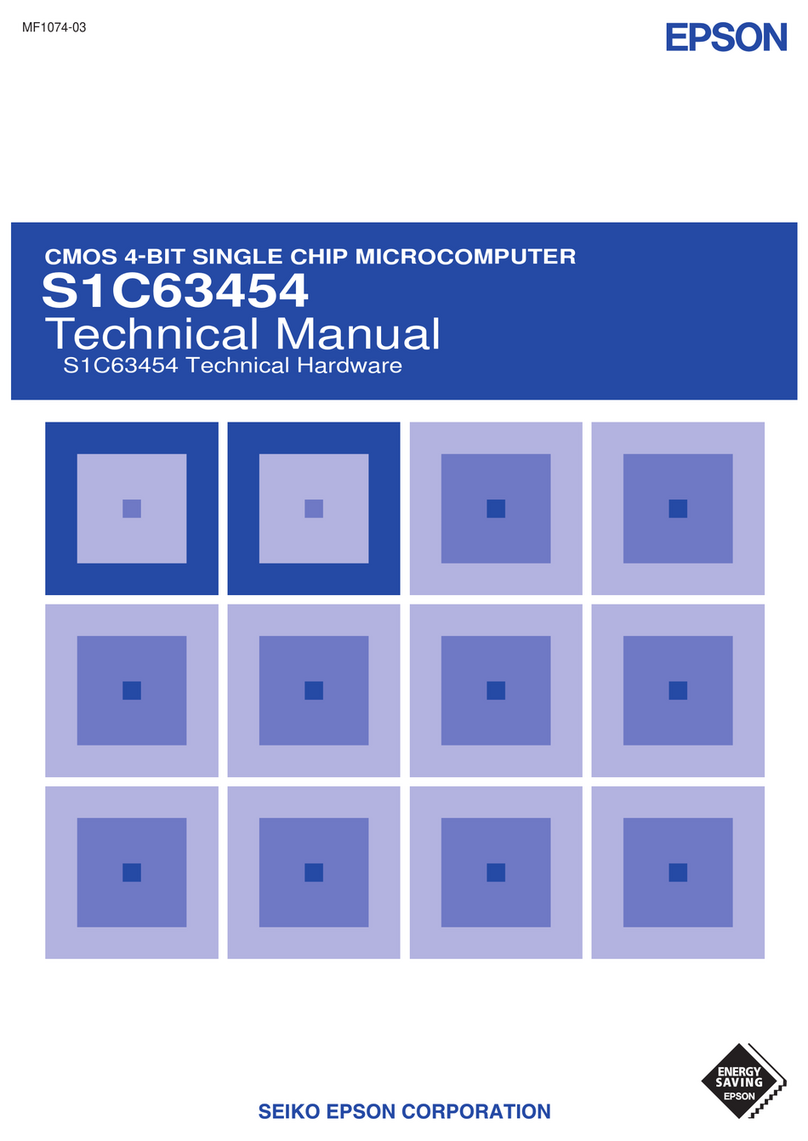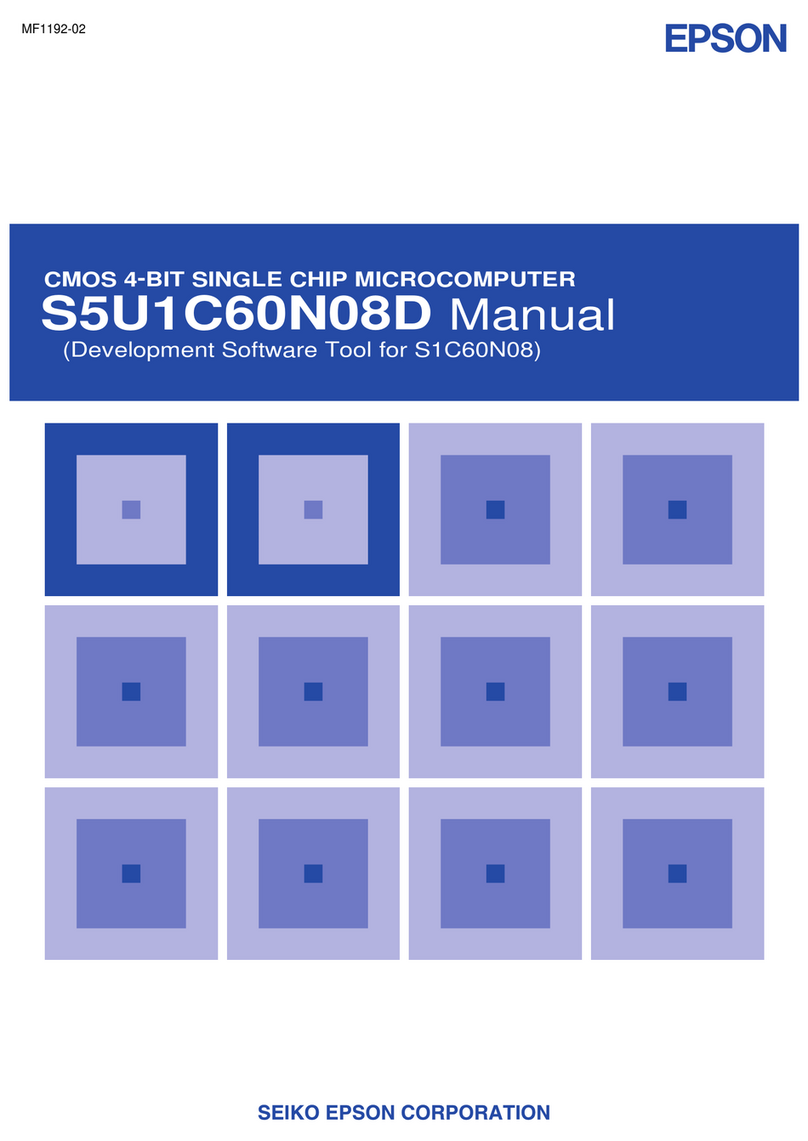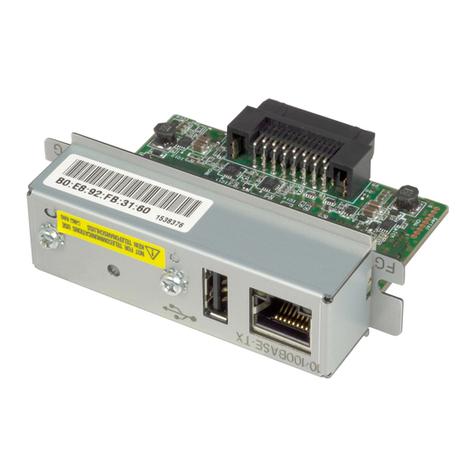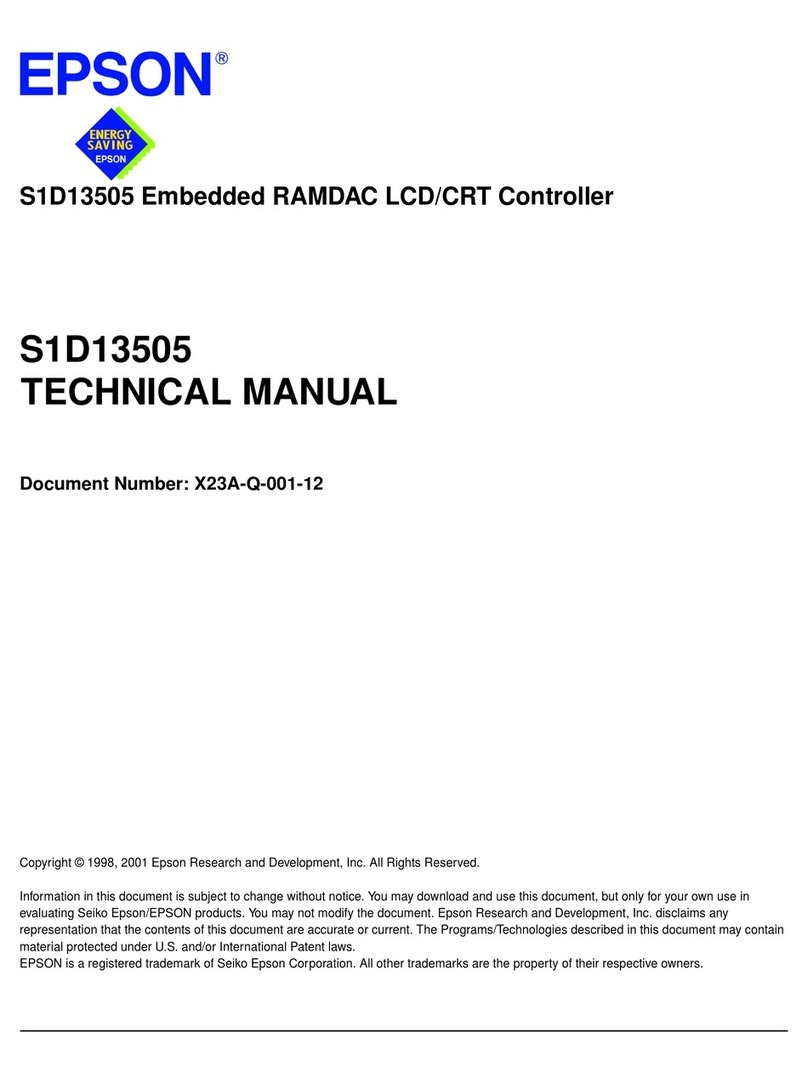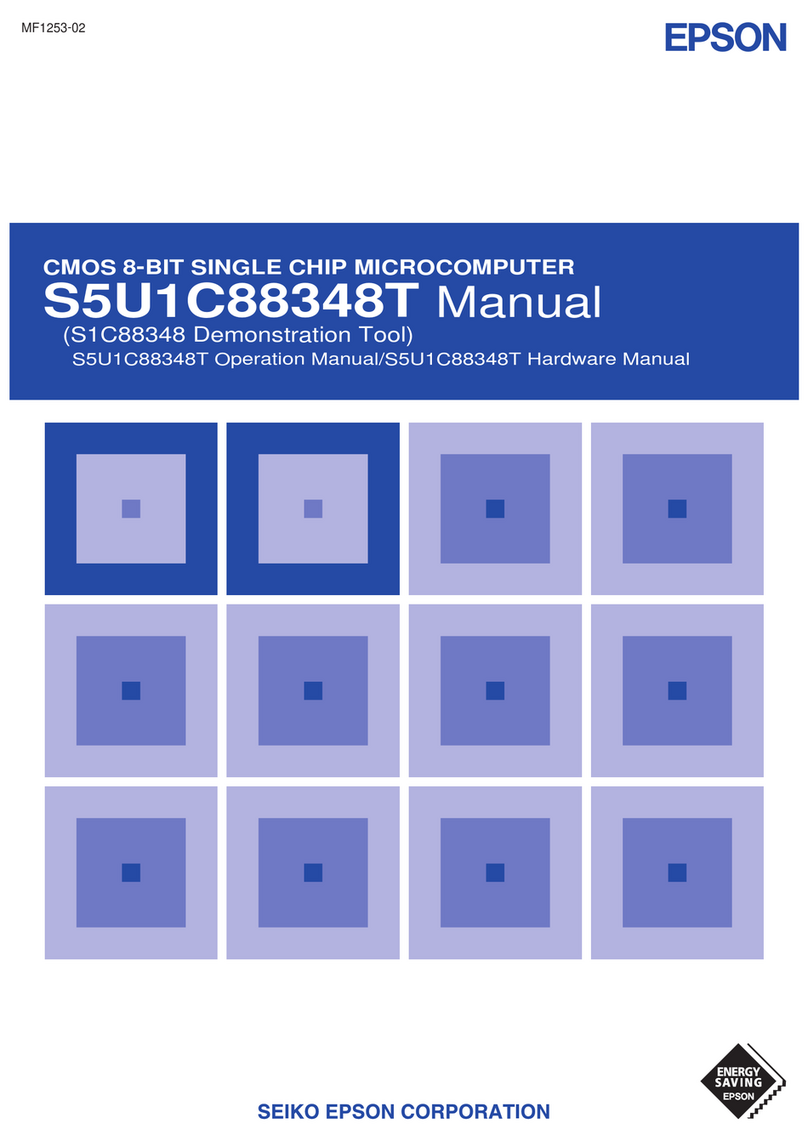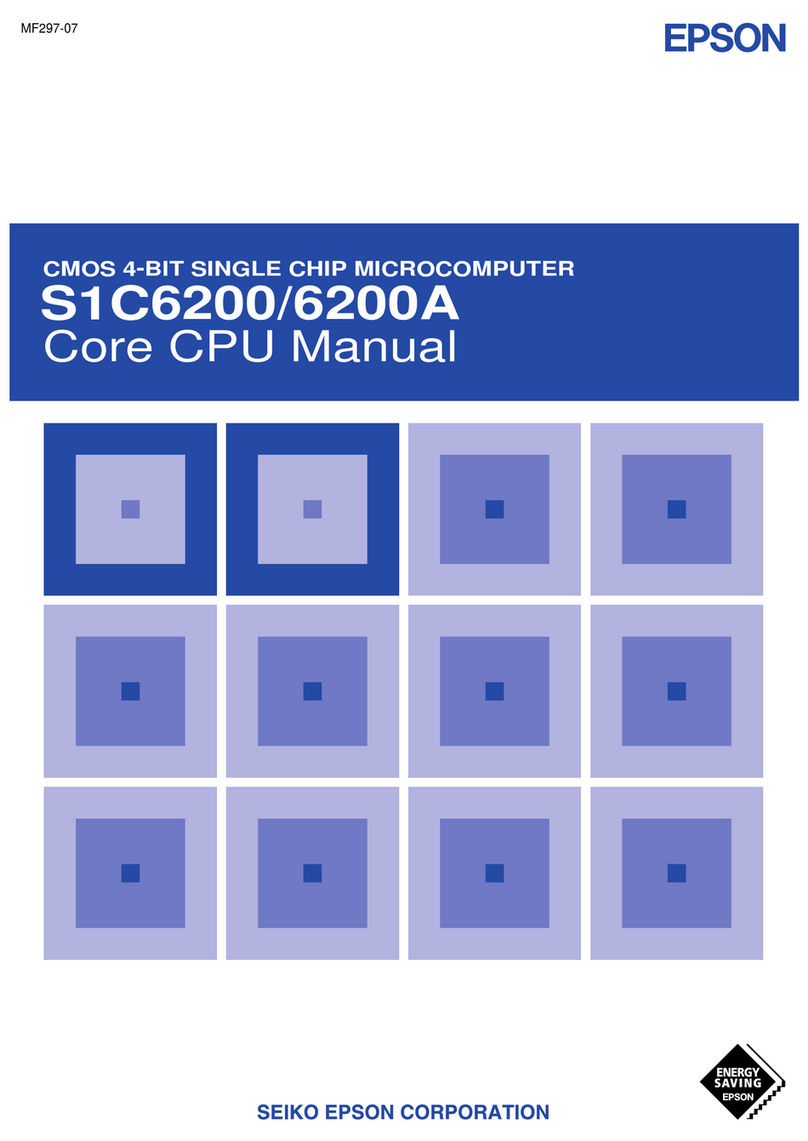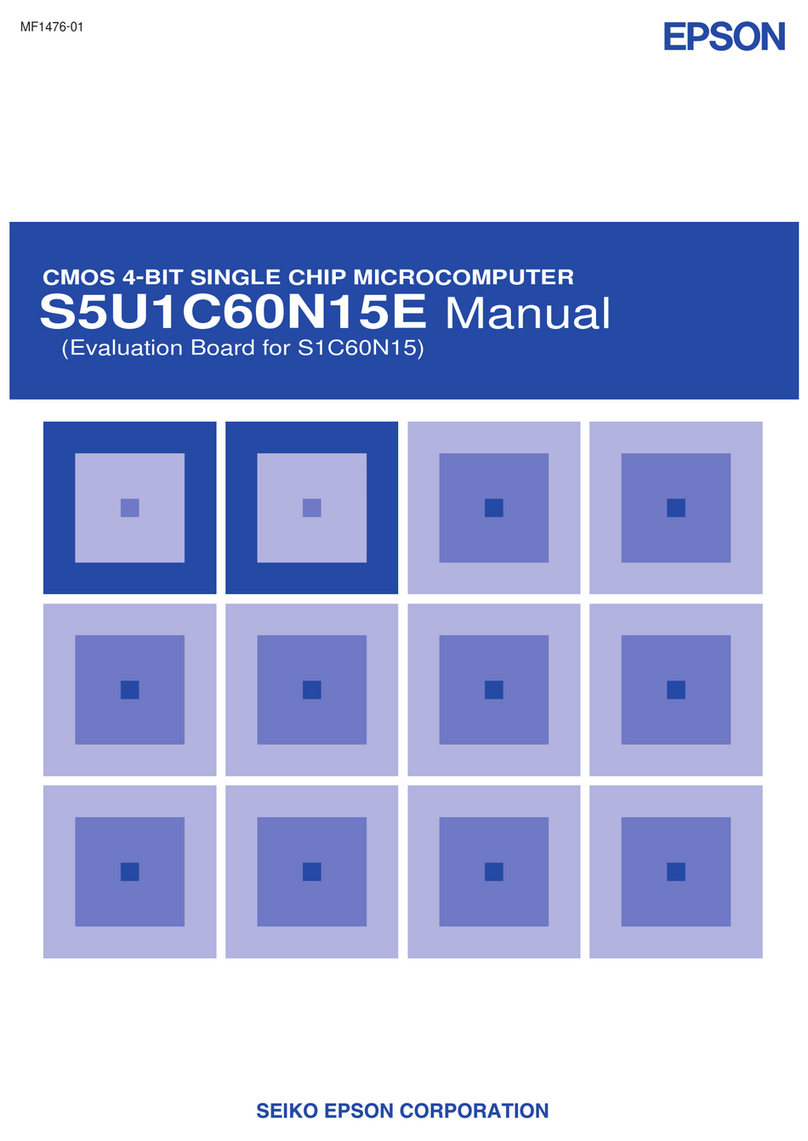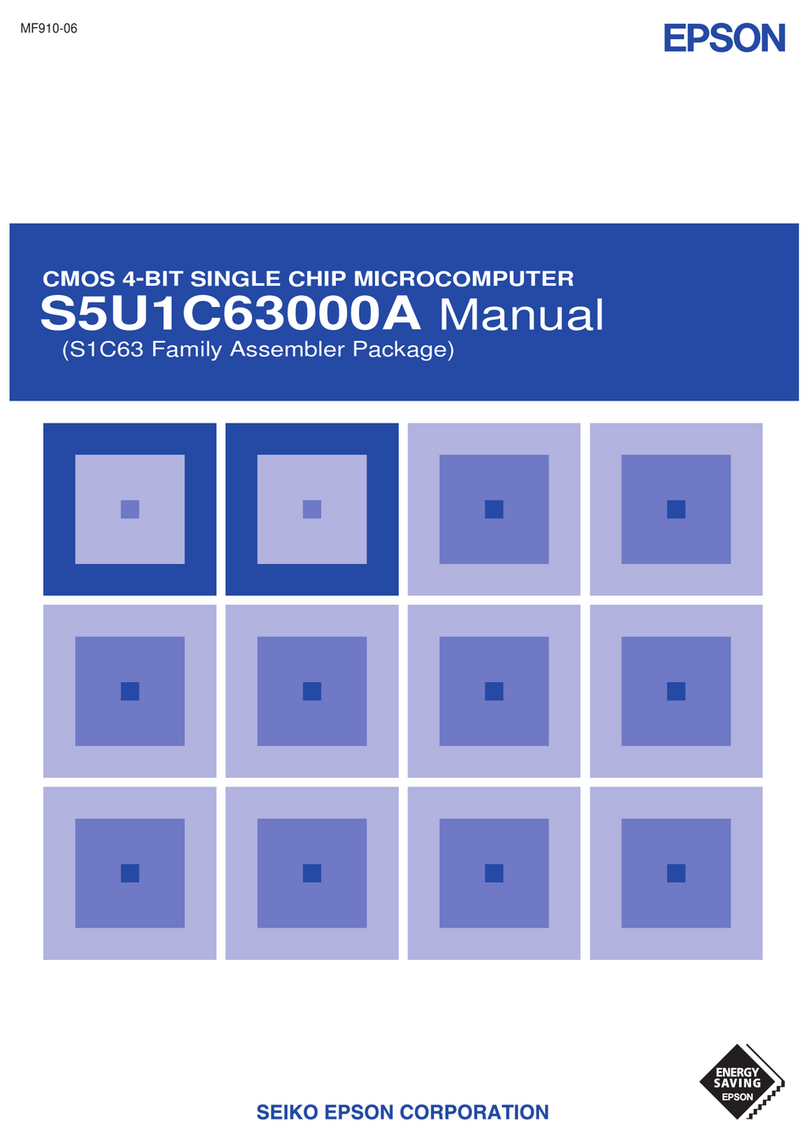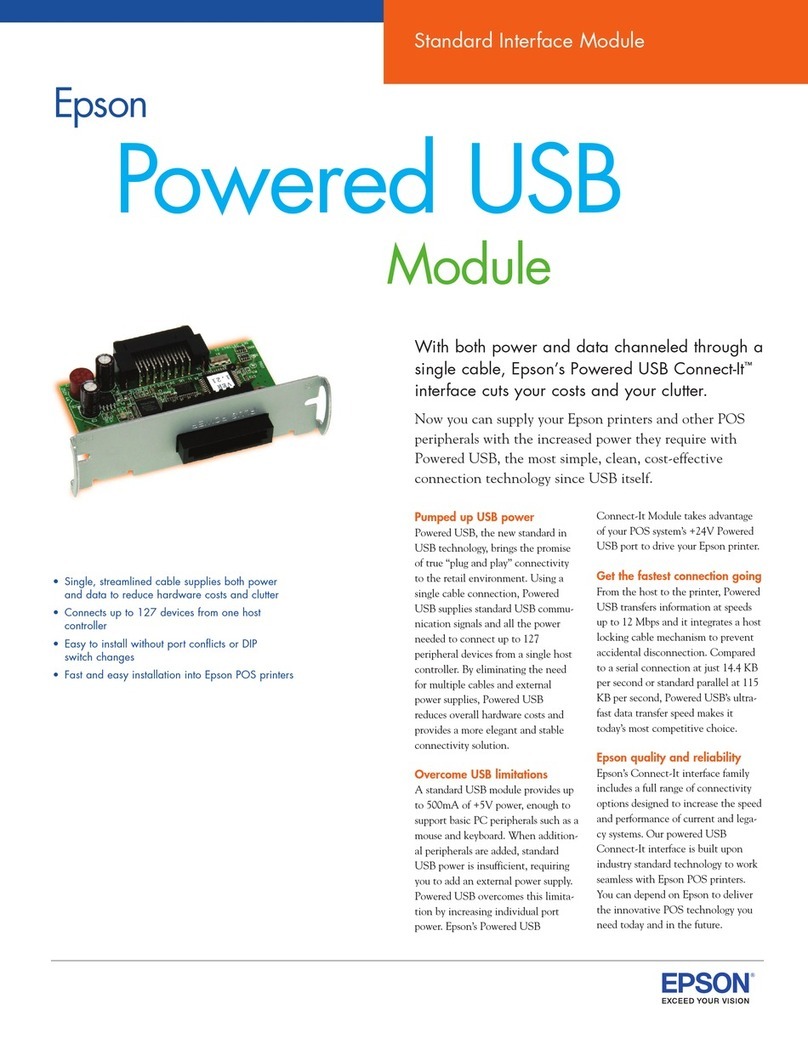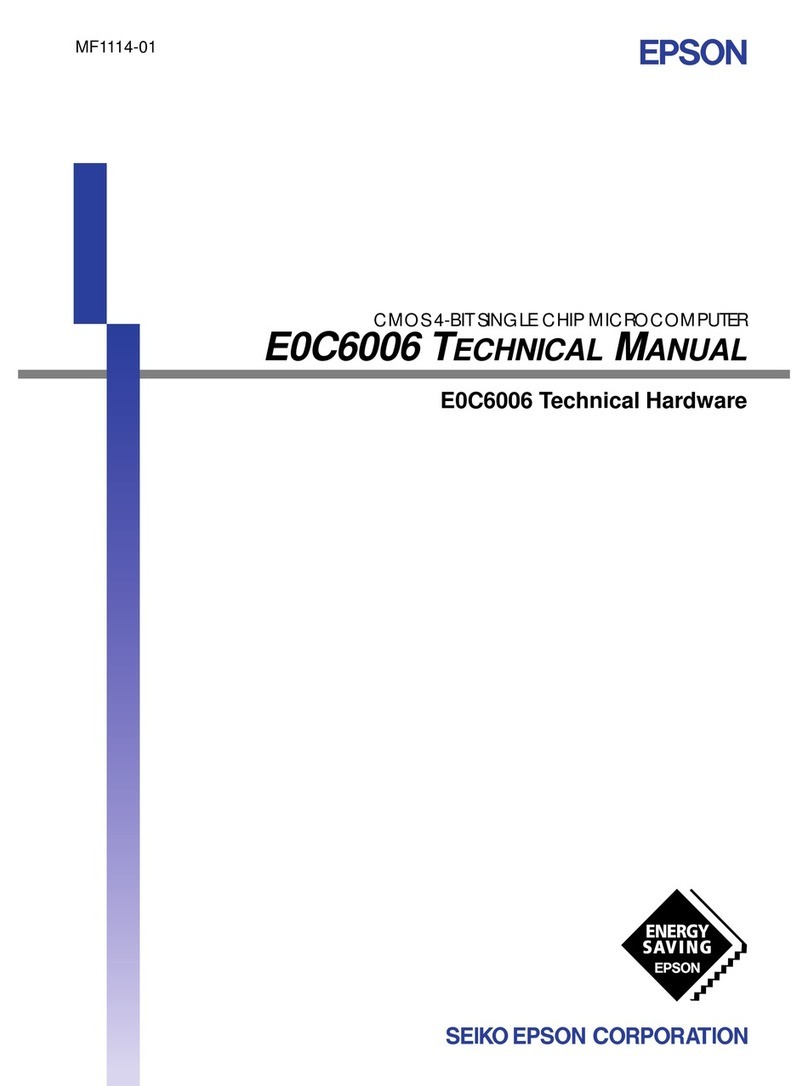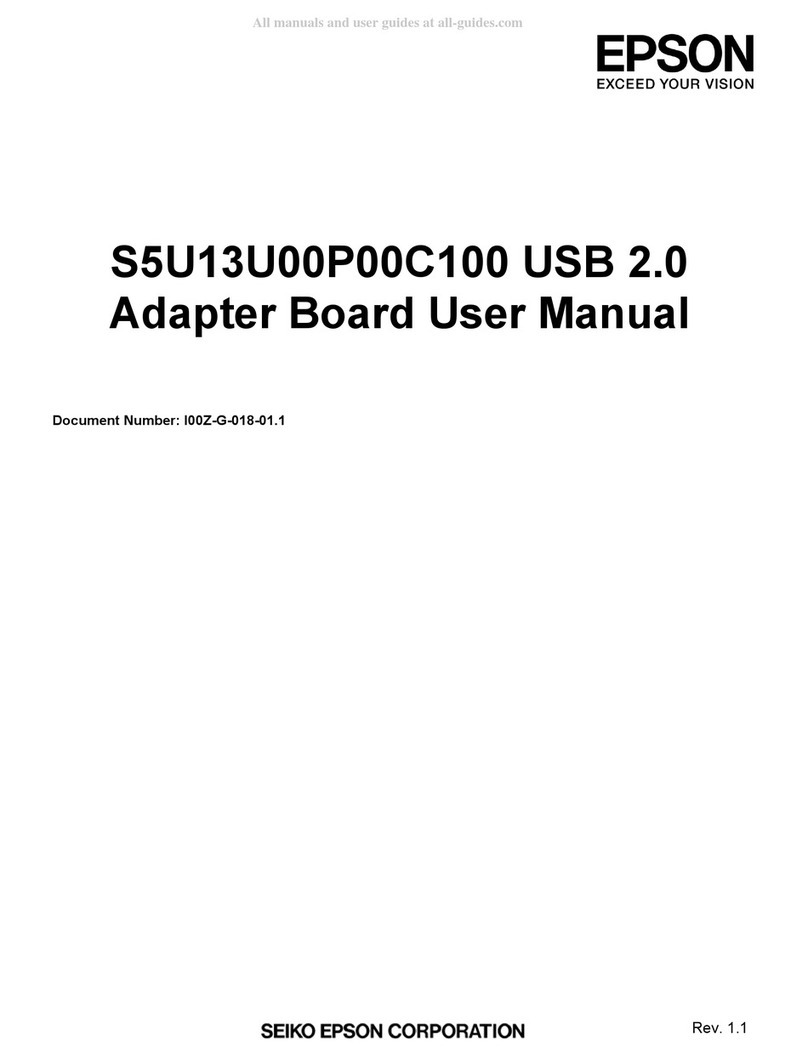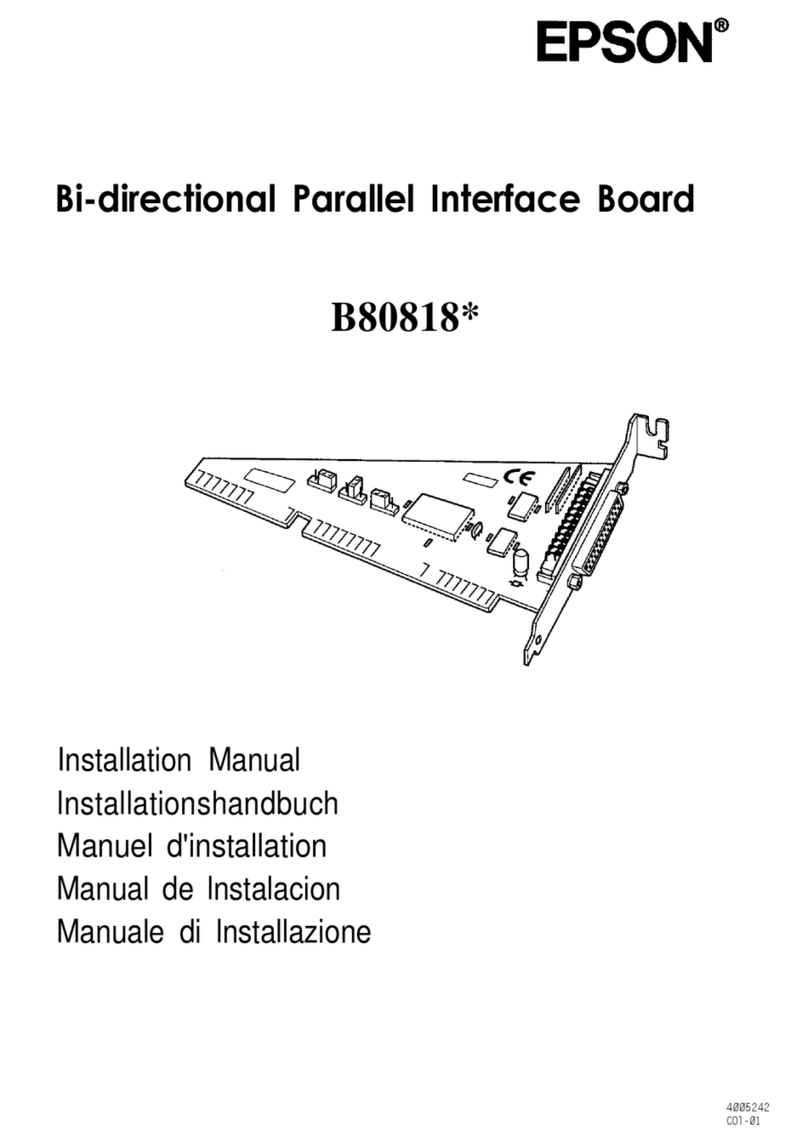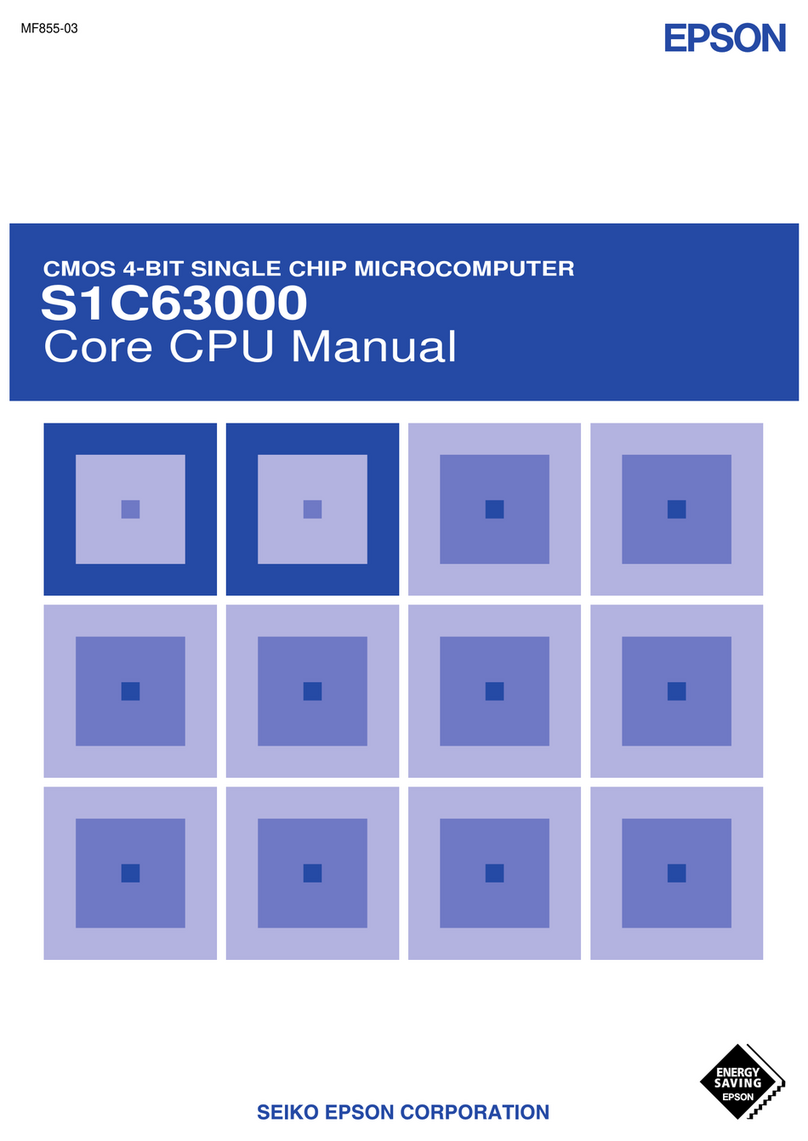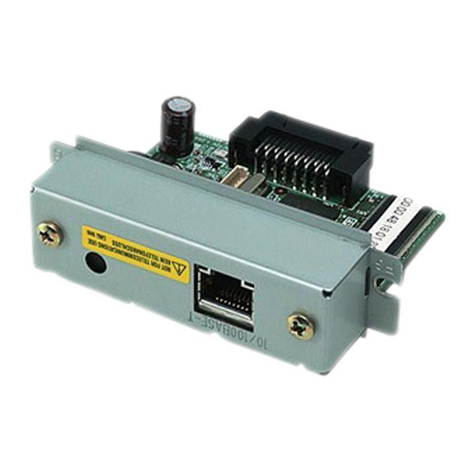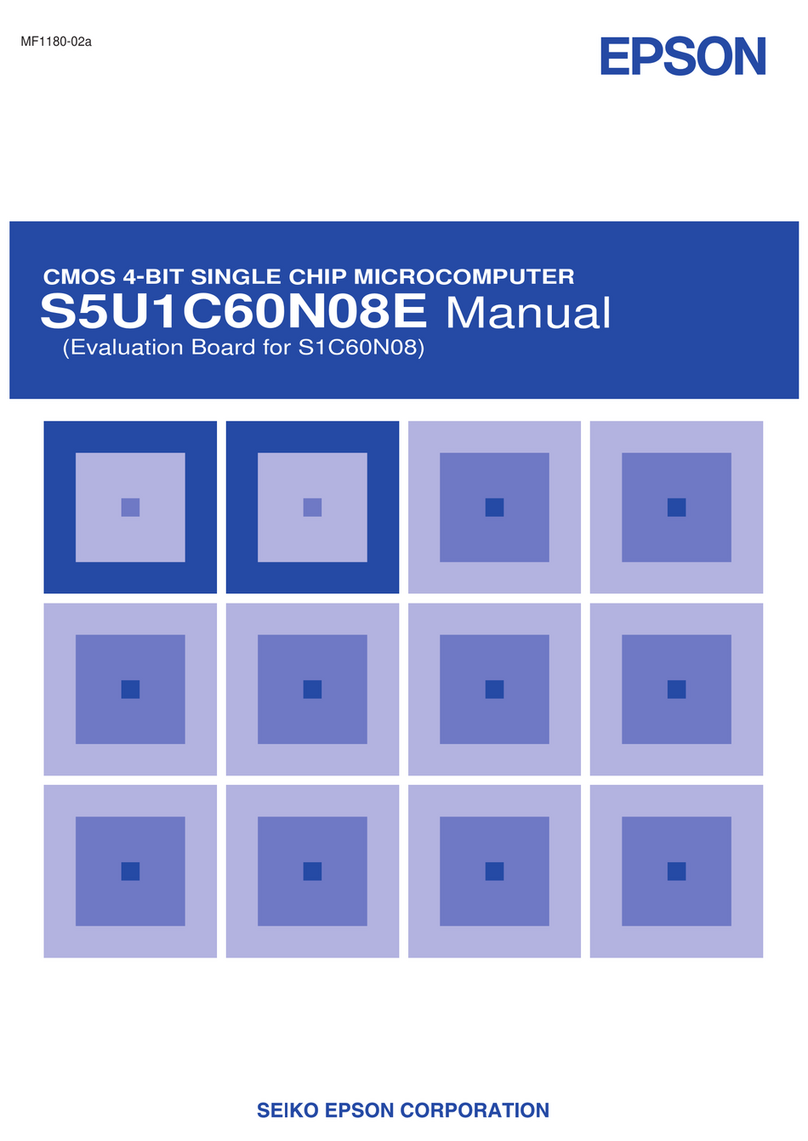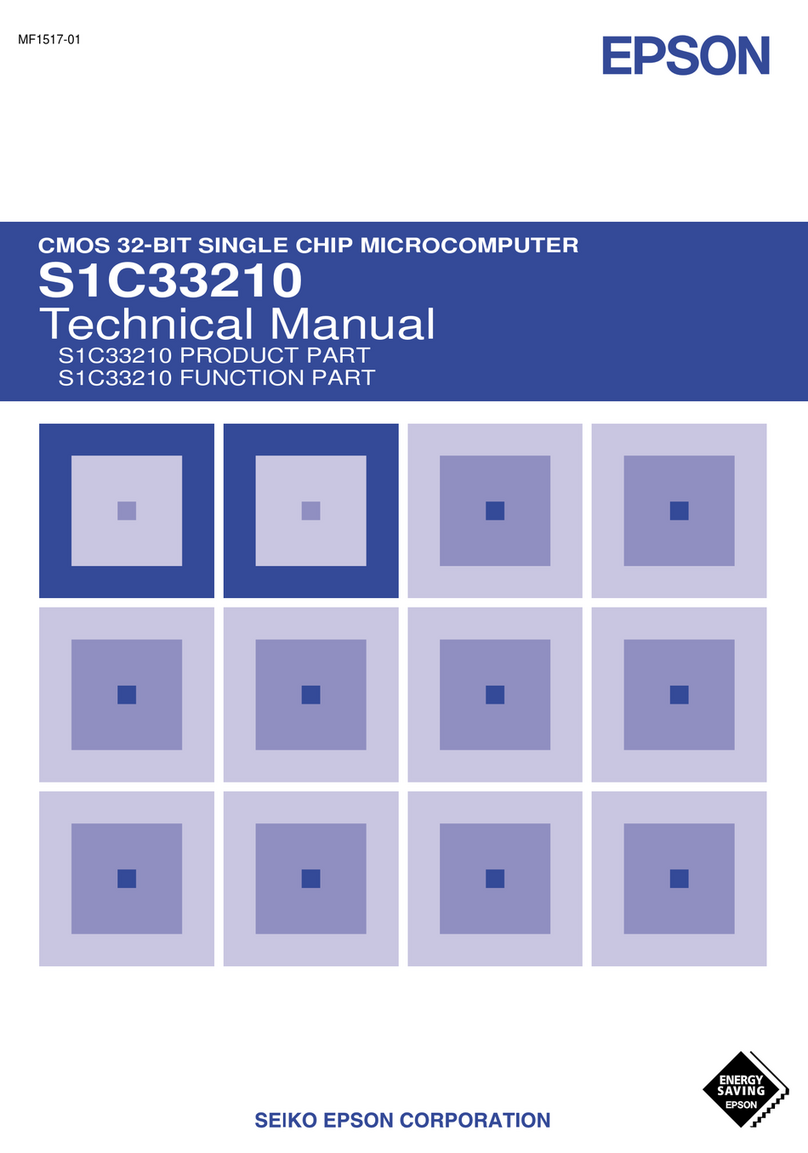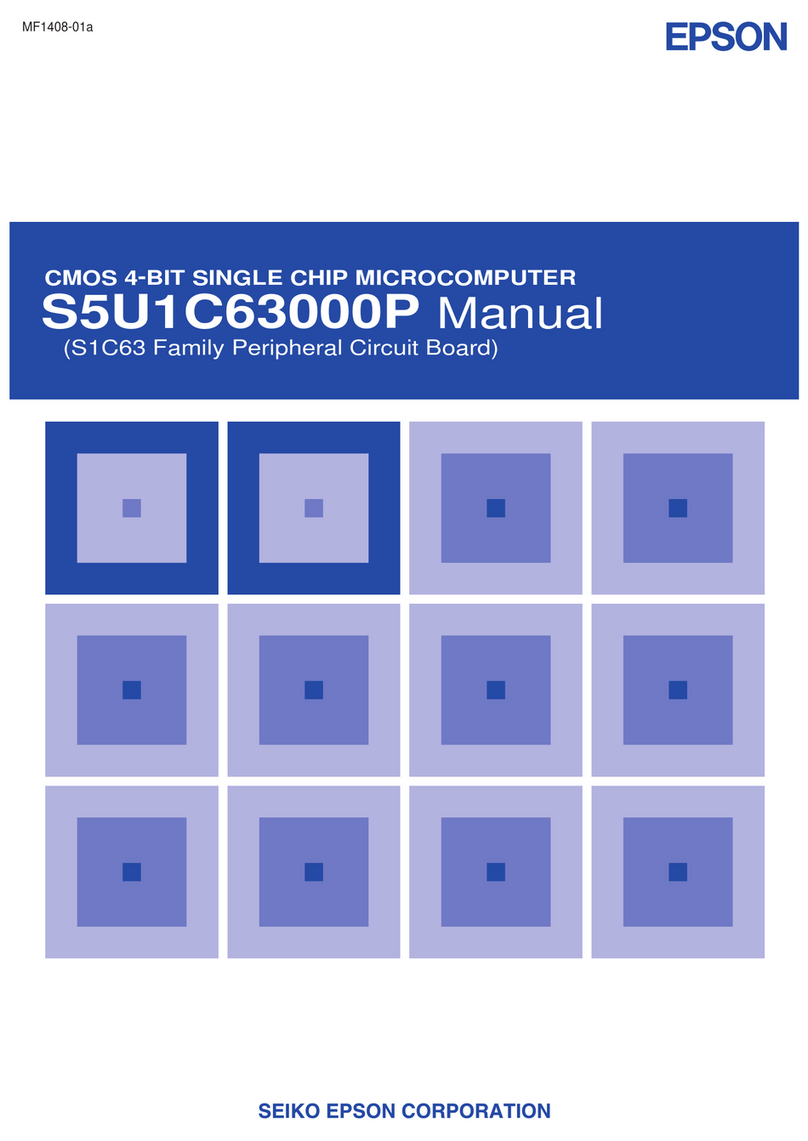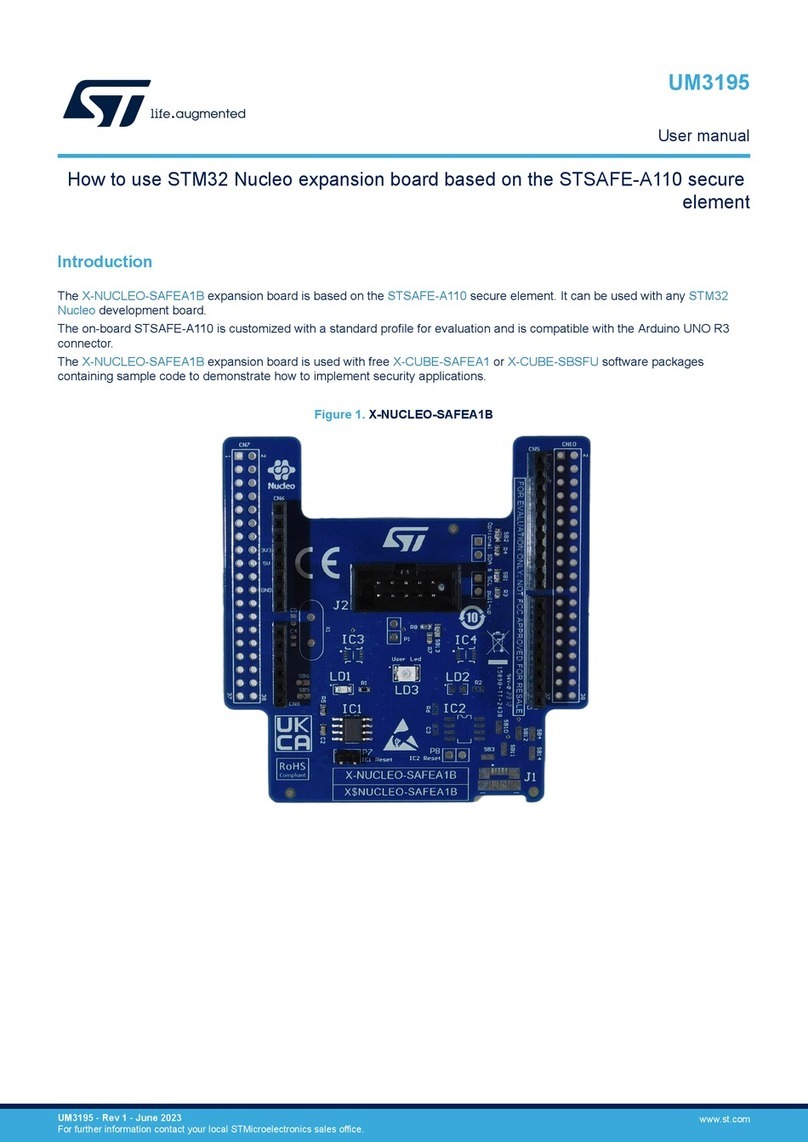
S1C60N03 TECHNICAL MANUAL EPSON i
CONTENTS
CONTENTS
CHAPTER 1INTRODUCTION ____________________________________________ 1
1.1 Features ......................................................................................................... 1
1.2 Block Diagram .............................................................................................. 2
1.3 Pad Layout .................................................................................................... 3
1.3.1 Pad layout diagram.................................................................................... 3
1.3.2 Pad coordinates.......................................................................................... 3
1.4 Pad Description ............................................................................................ 3
CHAPTER 2POWER SUPPLY AND INITIAL RESET_____________________________ 4
2.1 Power Supply ................................................................................................4
2.2 Initial Reset ................................................................................................... 6
2.2.1 Oscillation detection circuit....................................................................... 6
2.2.2 Reset terminal (RESET) ............................................................................. 6
2.2.3 Simultaneous high input to input ports (K00–K03) .................................. 6
2.2.4 Internal register following initialization ................................................... 7
2.3 Test Terminal (TEST) ....................................................................................7
CHAPTER 3 CPU, ROM, RAM________________________________________ 8
3.1 CPU............................................................................................................... 8
3.2 ROM .............................................................................................................. 8
3.3 RAM .............................................................................................................. 8
CHAPTER 4PERIPHERAL CIRCUITS AND OPERATION__________________________ 9
4.1 Memory Map ................................................................................................. 9
4.2 Oscillation Circuit ....................................................................................... 11
4.2.1 Crystal oscillation circuit.......................................................................... 11
4.2.2 CR oscillation circuit ................................................................................ 11
4.3 Input Ports (K00–K03) ................................................................................12
4.3.1 Configuration of input port ....................................................................... 12
4.3.2 Interrupt function ...................................................................................... 12
4.3.3 Mask option ............................................................................................... 13
4.3.4 I/O memory of input port .......................................................................... 14
4.3.5 Programming note..................................................................................... 14
4.4 Output Ports (R00–R03) .............................................................................. 15
4.4.1 Configuration of output port..................................................................... 15
4.4.2 Mask option ............................................................................................... 15
4.4.3 I/O memory of output port ........................................................................ 17
4.4.4 Programming note..................................................................................... 18
4.5 LCD Driver (COM0–COM3, SEG0–SEG14) ............................................. 19
4.5.1 Configuration of LCD driver .................................................................... 19
4.5.2 Cadence adjustment of oscillation frequency........................................... 24
4.5.3 Mask option ............................................................................................... 25
4.5.4 I/O memory of LCD driver........................................................................ 26
4.5.5 Programming note..................................................................................... 26
